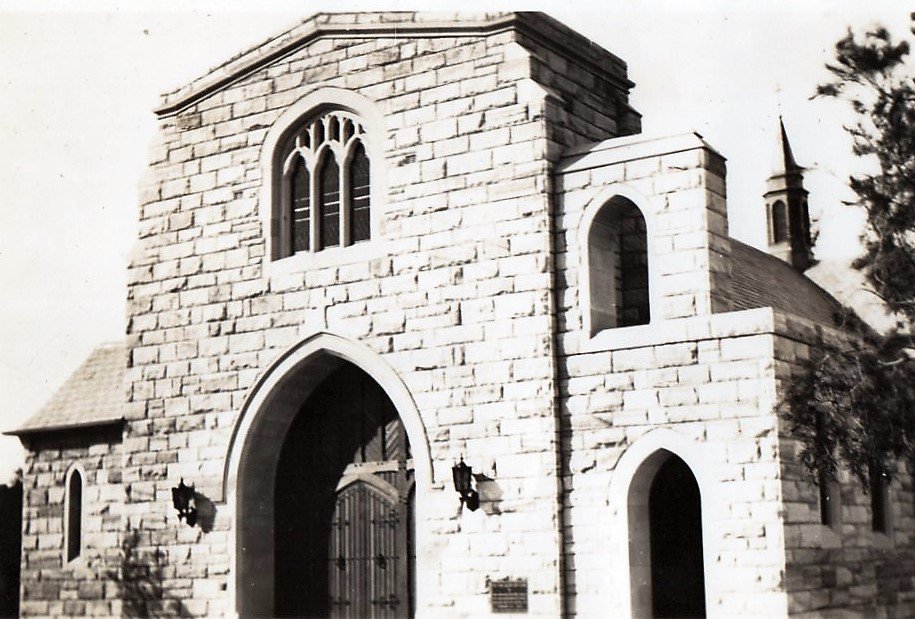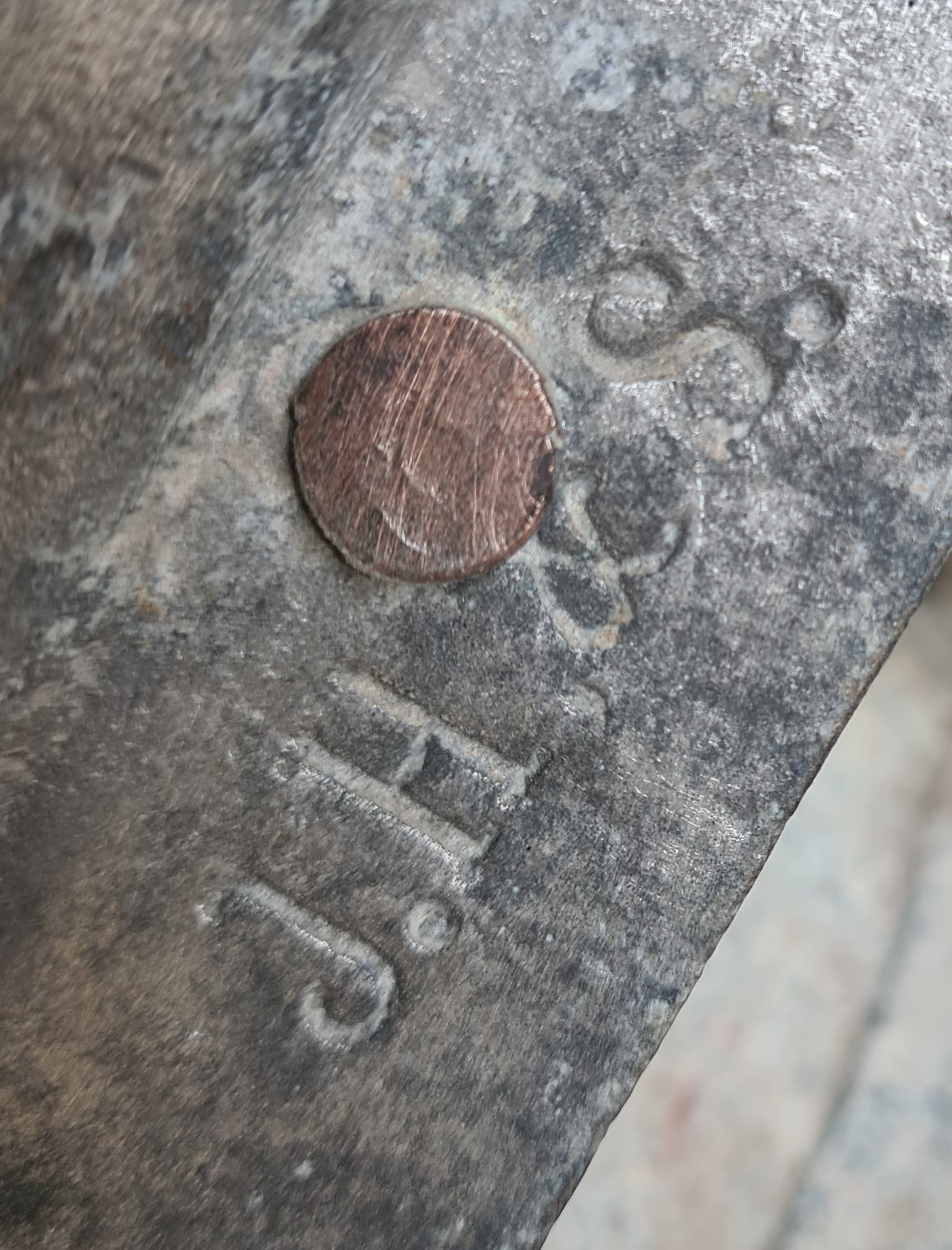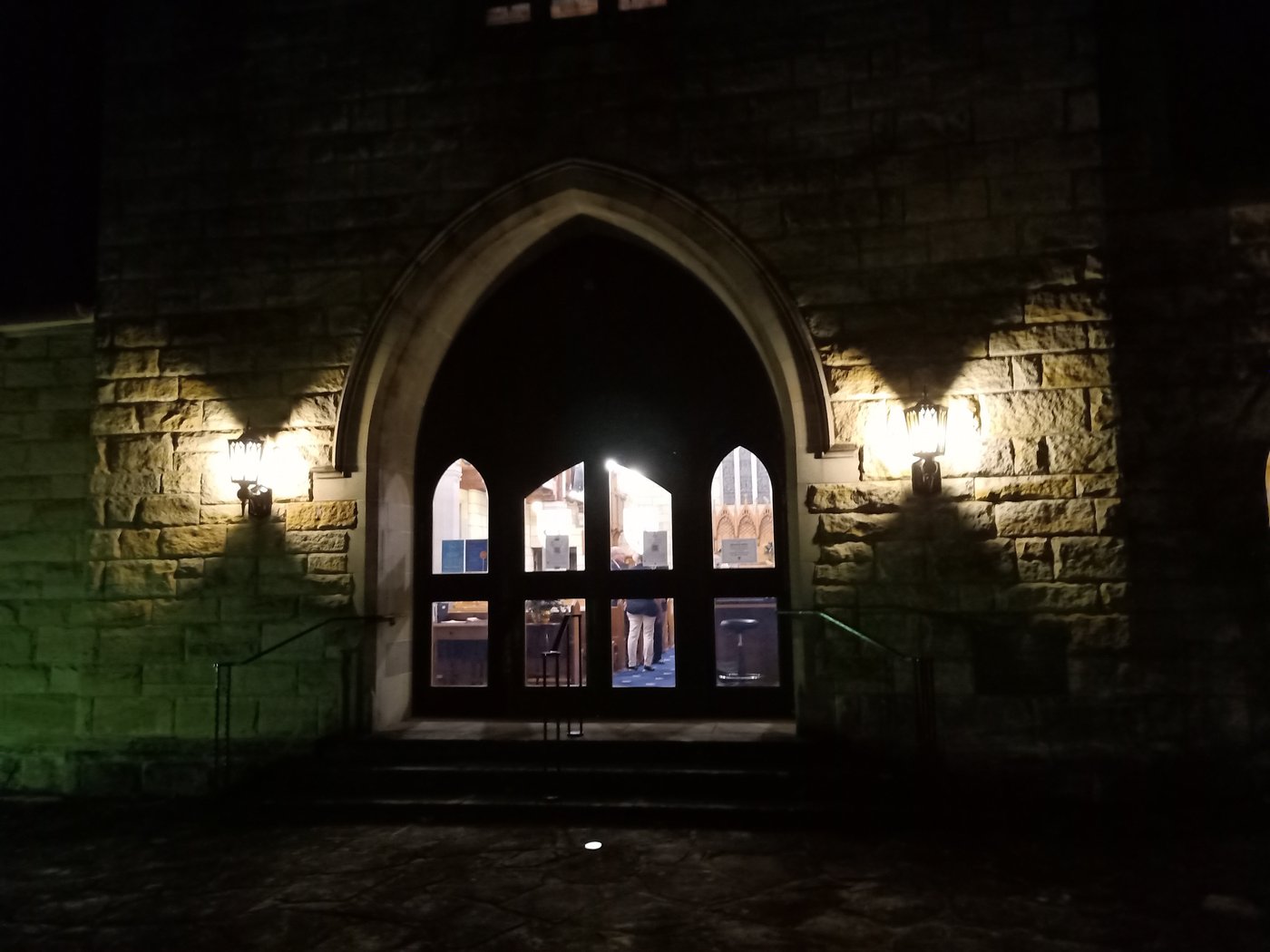Our History
St Swithun’s Pymble is named after an English bishop, Swithun of Winchester. He lived in the 9th century and was the first Lord Chancellor of England. We are the only Anglican church in NSW with the name ‘Swithun’.
The congregation was initially formed as a branch of the parish of Gordon. The first service was held on 14th July 1901, with 50 adults and 30 children gathered together in Pymble Community Hall, a building erected by members of the Pymble family.

In 1920 St Swithun’s became a parish in its own right. The first church building, a little wooden hall, was built on land sold to the church by the Pymble family. All church services were held there until 1940 when the new stone church building was completed. The parish soon planted a new branch church: Christ Church St Ives.
The population of Pymble grew significantly after World War II and these were the days of a huge Sunday school and very large Confirmation classes. This growth led the parish to acquire and erect new buildings and (more recently) engage staff to assist the rector. Before the War, the rector’s only assistant was a catechist who came to help on Sundays. The assistance of an office secretary and a ministry team did not come about until the 1980s.

From the beginning the contribution of lay men and women has been vital: running the Sunday school, assisting with the preaching and leading services, and financing the new buildings and land purchases. One important feature of the congregation has been the above average attendance of men. Another feature, rather unusual in the Diocese of Sydney, has been the opportunities women have enjoyed to lead services and preach.
Mission has always been integral to the life of St Swithun’s. Mission to the local community has included teaching Scripture at the local primary school, and holding missions. Many members were involved in the 1959 Billy Graham Crusade that gave great impetus to the life of the congregation. St Swithun’s youth groups have nurtured numerous young men and women who have gone on to become cross-cultural missionaries, ordained clergy and lay church workers.

Music has grown more important at St Swithun’s over the years. The church installed a beautiful pipe organ in 1989 and the choir has grown in strength in a period when many other choirs in Sydney have declined.
Pastoral care has always been a priority in the parish, whether from the rector of the day, or from congregational members to each other, and, most recently, from designated staff.
The Bible likens God’s church to a building, not one made out of sandstone but rather living stones – people! Over the years the people of St Swithun’s have experienced growth, challenges, blessing, earthquake and renewal. Our building may now be heritage-listed but the people who meet there remain as we always have been: a collection of ‘living stones’ still being fashioned by our heavenly Maker.
Living Stones: St Swithun's Pymble
Marcia Cameron
If you would like to know more about the history of St Swithun's copies of the book Living Stones: St Swithun's Pymble, by Dr. Marcia Cameron are available from the church office.
The Story of the St Swithun‘s Carriage Lights
There was a great sense of joy when St Swithun's Pymble became a Parish in its own right in December 1920. The church building was a little wooden hall and all services were held there until 1940 when the new stone church building was completed on its present site as the Second World War raged across Europe.
The foundation stone was laid in February 1940 and the building was dedicated by Archbishop Howard Mowll on 31 August 1940.
Just as the people of war-torn Britain handed over their aluminium pots and pans to be turned into aircraft, so, too, did women in Australia play their part in the war effort. No doubt the idea of carriage lights for the new church building was seeded. Thus, members of the congregation were encouraged to donate saucepans, frying pans, colanders, tea trays, kettles, pot lids and any other scrap that contained aluminium so they might be made.

There are members of St Swithun’s today who were children at the time. They’ve been able to recall some of the fascinating details of those days. In fact, Lois Rasmussen remembers her late mother-in-law, Clara (known as Clare) Rasmussen, recounting her own memories of the appeal going out for aluminium items so that lights might adorn the new church.
David Ward was about 5 years old at the time. With his father at war, his mother, Berri Ward, immediately took to the idea. David can remember his mother carrying a basketful of old aluminium pots and pans as they walked together up to the church.
Allin Cousens recalls the late Alice Hancox, a long-time parishioner and past Choir Patron, seeking him out to inform him about the origins of the lamps, that they had been cast by a foundry in Hornsby in 1939 or 1940.
However, there was no clear memory as to when the lights were actually installed, not until Lois Rasmussen came up with a photograph of the façade of the church taken in 1940, showing the lights in situ. A bow across the front entrance above the original wooden doors would seem to confirm the lights were installed in readiness for the dedication of the new church building in 1940.
 Carriage lights in place for the dedication of the Church
Carriage lights in place for the dedication of the ChurchAnd so, for the next 80 years, the carriage lights showed the way to worship. However, as was destined to be, over the years they became more and more corroded and there was concern about the preservation of our heritage. Then, in 2020, in God’s good timing, the Wardens applied for, and were successful in gaining, a Saluting Their Service (Federal Government) Grant of $2090 which enabled the lights to be fully restored by C. Simpson Restorations of Forest Lodge. In the process of stripping off the old black paint, an elegant brass plate was revealed at the base of each light and then on the interior side walls, an engraving of ‘JHS’.
 Engraved "JH & S"
Engraved "JH & S"Believing these to be the initials of the foundry that had cast the lights, a Google search came up with ‘John Heine & Sons’ and we were convinced we were on the right path. Over the next months, Robin Hall talked at length, first with the Manager, and then more recently, with the former Director of the company, John Heine, only to be told they had never had a foundry in Hornsby, and nor did their work ever include such items. However, he added, Victor Heine, Company Director in the 1940s, had lived in Merrivale Road and he and his family “went to church”, possibly St Swithun’s. John suggested, perhaps Victor had taken the aluminium items the women had collected to one of the many foundries at Hornsby at that time, and the ‘JHS’ was added simply to indicate Victor’s connection with the job. Other than that, we can’t be sure why our carriage lights are engraved with ‘JHS’.
Over the months, Allin Cousens was in communication with Hornsby Historical Society and several useful links were provided. However, it proved difficult to access information from those sources.
In January 2021 the two beautifully restored carriage lights were re-installed in their rightful positions, an appropriate event to celebrate the 100th Anniversary of St Swithun’s becoming a Parish in its own right.
 The restored carriage lights still light the path to worship today
The restored carriage lights still light the path to worship todayPrepared by Robin Hall and Allin Cousens, with thanks to Lois Rasmussen and David Ward for their helpful contributions.
